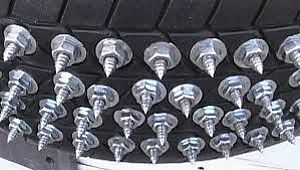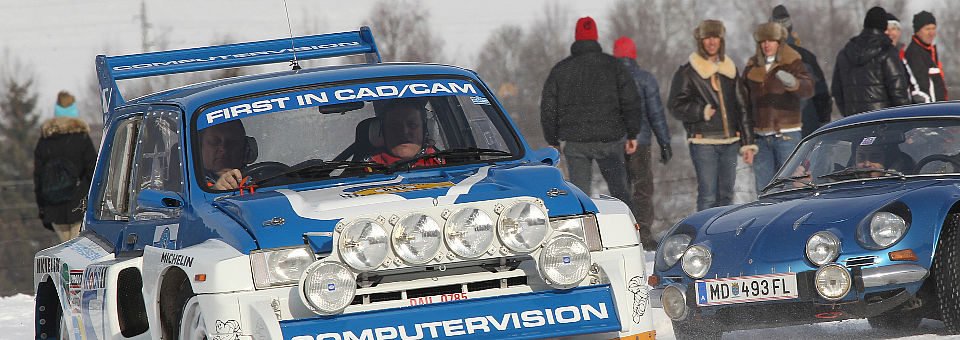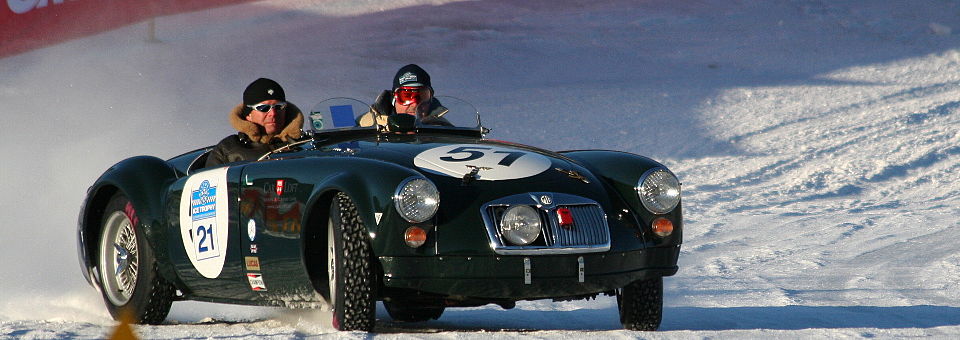EGULATIONS - CLASSIC HIT
Details of the Event:
The event takes place on an ice-covered circuit (w/o salt or crushed stone) as a constancy competition including training, qualification, pre-final, final and super-final heats.
The rating is made by means of a system referring to the time deviations of the laps, whereas the participants can define their speeds on their own. The participants are, subject to their qualification times, divided into groups having almost the same lap times.
Concerning the heats to be performed minimum target times are specified for the single epochs. These minimum target times must not be exceeded (penalty points). The minimum target times are adjusted to the track conditions by means of the performance regulations and are communicated at the beginning of the competition.
Eligible Participants:
All drivers have to produce a valid driving license.
Eligible Cars:
Oldtimer 2 WD build prior to 1984, categorized in different epochs. Cars must have MOT approval (or special license plate) - permanent or trial.
Equipment and technical Conditions of the Vehicles:
All cars have to be inacceptable and reliable condition which will be examined during the acceptance inspection. A well-marked towing hook has to be attached to the front and rear. Given that the competition takes place during the day as well as the night each vehicle has to have functioning and sufficient lighting.
Type of tires
Any kind of winter tire is permitted.
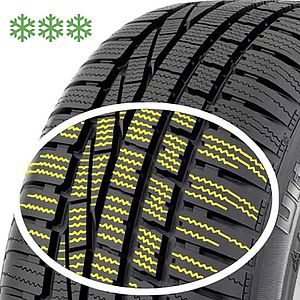
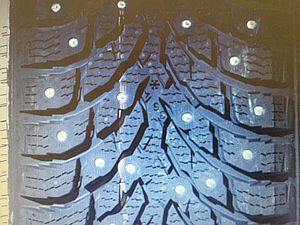
Spikes:
Exclusively customary spikes are permitted, which might also be used on public road’s (Austrian MOT approval).
Maximum 10 spikes per 10 cm tire surface are permitted .Visible size of the single spike may not exceed 2mm height.
 |  |
Note:
Allowed spikes
Only commercially available spikes with a maximum of two plates are allowed, which are also approved for public transport. Bolted spikes are forbidden anyway.
A maximum of 10 spikes per 10 cm tire tread may be used.
The spikes must not exceed a maximum height of 2 mm from the tread to the top of the spike.
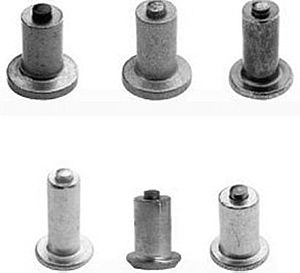
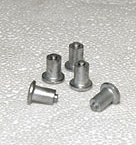
We would like to call your attention to above mentioned definition of permitted tires and spikes for HIT 2019 (training and races). Tires and spikes will be inspected during technical acceptance. Accepted tires will be marked. Unmarked tires may not be used at all.
Forbidden spikes
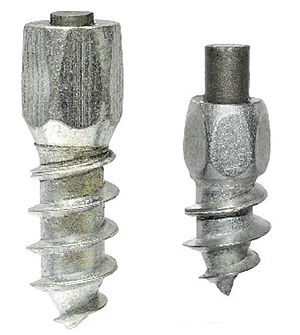
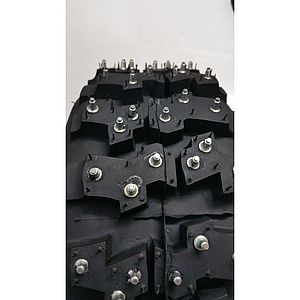
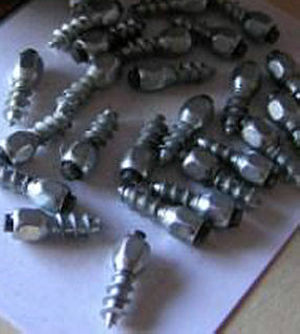
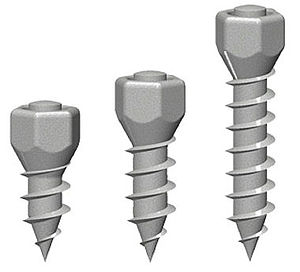
Fuel:
Standard fuels are permitted only. For the environment protection refuelling the vehicle within the event area is only permitted in the designated are and in the pit lane.
Track Description:
Permanent Circuit: Length: about 2 to 2,5 km
Width: about 7-10 m
Track covered with ice and snow (no salt and no crushed stone!).
Registration:
Given that the number of participants is limited, the applications are dealt with according to their submission (FIRST IN – FIRST SERVE). We reserve our right to accept vehicles due to their rarity and add them to the list of participants. Applications might be refused without stating any reasons. All applications can be accepted only if the application fee has been paid and a picture of the relevant vehicle has been submitted. In case an application cannot be accepted the fee will be returned.
Upon the acceptance of the registration each team is permitted to participate in the Regularity and Race Class.
The entry fees cover the evening event for the divers and co-drivers (as well as drinks and lunch during the day and evening event and the award ceremony). The entry fee does not include any accommodations.
Regulations and Additional Information
General Information:
You have to adhere to the instructions of the organizers.
The style of driving and the speed have to be chosen according to the vehicle and the skills of the driver. To select approximately equally fast vehicles to drive at the same time on the circuit for the further heats a grouping is made based on the circuit times of the qualification courses.
In case a team drops out from a heat it can start again for the next one. All heats not performed are rated by a maximum time and are included in the total rating. This applies to all heats.
It is now allowed to stop in front of the start / finishing line; furthermore, the finish area (50 m before and 20 m behind the line) has to be passed by a speed of at least 30 km/h to guarantee a genuine time-measuring.
It is generally possible to return to the track after a pit stop. The not performed heats cannot be completed after the circuit race is over.
Depending from the minimum target times of the relevant epoch, result the number of heats and a maximum total circuit time. As soon as the heats / total time is over the teams are waved aside. Those heats which could not be performed are rated using the maximum points (1000 points per heat) and included in the rating.
Administrative Acceptance:
For the acceptance each driver has to produce the registration confirmation, the payment statement for the application fee as well as a valid driving license. In case a change of driver takes place during the event the co-driver, which participates as second driver, has to produce a valid driving license. A driver – co-driver change is only allowed within one team.
Inspection and Acceptance:
Each filed car must be in an acceptable technical condition. For the technical inspection the vehicle has to be presented to the organizers having starting number and sponsor label fixed on the car. Special focus will be on lighting and brakes. For the acceptance those tires have to be mounted to the vehicle, which are the ones to be used during the competition. The tires might be marked and those marks are possibly checked during the event. The correct mounting of the towing hooks as well as marking is also checked (a front-hook and a rear-hook, marked in yellow or red). The participants are responsible that during towing the vehicles are not damaged.
For reasons of security all participants are asked to wear crash-helmets (for the Race Class helmets are mandatory), which have to be produced unrequested during the inspection. We recommend a fire extinguisher. Any other kind of security appliances, as roll bars, bucket seats, circuit breakers, extinguishing system, etc., are, of course, allowed but not mandatory.
Track Survey:
Track is opened to be surveyed by the drivers / co-drivers on Monday 14.01.2019
For the survey NO kind of vehicle is permitted on track (please, walk!).
Driver / Co-driver Briefing:
The drivers and co-drivers are instructed during a briefing session prior to competition; to participate in this briefing is mandatory for both, driver and co-driver.
Chronometry:
All lap times are measured by a time-measuring system installed by the organizers. This system uses either a photo sensor or transponder measuring for an exact measuring. Concerning the time-measuring done by each of the teams the digital or analogue means of time-measuring within the vehicles are permitted only.
Not allowed are external time-measuring systems and the transmission of the measured times into the vehicle. In the car are all types of distance counters are allowed.
Minimum Target Times:
In order to run a smooth event, minimum target times are defined (subject to the epoch and the track conditions). In case these minimum target times are not reached by the relevant team will get penalty points.
Defects - Breakdowns:
In case of a defect or breakdown the affected team may continue racing after the relevant repair work is done. Missed laps will be assessed by means of the maximum points per lap and are included in the total rating. If a vehicle drops out in the Race Class it is queued again at the last position for the next lap. Given that several vehicles drop out at the same time the position at the final passing of the finish line is decisive.
Training:
The formation for the respective training session is specified on the day before. The participants will be sending on track from the pre-start in a 3 to 5 second pulse. The number of laps is free during the training but we recommend that each team passes at least three training laps. A driver change during the training is only permitted in the pit area (for entering and leaving the pit walking speed is mandatory).
Qualification Heats:
The starting line-up for qualification heats is defined at the pre-start line. The participants will be sending on track from the pre-start in a 3 to 5 second pulse. The time of the second lap is the reference time for the Regularity Class, the fastest lap time is used as basis for the starting line-up of the Race Class. The fastest teams of each epoch (concerning the Regularity Class rating) are granted a time credit for the further circuits. The credit times are deducted from the penalty points due to any time deviations.
Pre-Final Heats:
The starting line-up for pre-final heats is specified at the pre-start line. The participants will be sending on track from the pre-start in a 3 to 5 second pulse. The results of all the heats are included in the total rating.
Final Heats:
The starting line-up for the final runs are specified at the pre-start line. The participants will be sending on track from the pre-start in a 3 to 5 second pulse. The results of all the heats are included in the total rating.
Super-Finale Heat:
The starting line-up for the final runs are specified at the pre-start line. The participants will be sending on track from the pre-start in a 3 to 5 second pulse. The results of all the heats are included in the total rating.
Penalty Points:
Deviation per 1/100 sec. = 1 Point Maximum points per lap: = 1000 Points
Credit Points:
Points are credited for the fastest teams of the qualification heats. These credits will be taken into consideration for all following heats.
For each epoch and heat:
1. = 200 Points
2. = 150 Points
3. = 120 Points
4. = 80 Points
5. = 50 Points
Race Class:
Concerning the Race Class one heat per day is performed. Each time of the Regularity Class is also permitted to start for the Race Class (but it is not mandatory to participate - separate rating). The start line-up of the Race Class results from the best qualification times. For the start line-up of the second heat the result of the first one is used.
CLASSIC HIT Super Trophy – long spikes (7mm):
On Sunday the CLASSIC HIT Super Trophy is planned. This heat is only performed, once proper track and weather conditions are prevailing (e.g. min -10°C permanently during race week). If heat finally is performed will be decided by race director on the respective race day
Preconditions to participate
- Max spikes with 7 mm length
- Roll bar
- Helmets are mandatory for driver and co-driver
- Sufficient lightings
- Fire extinguisher
Rating – Race Class:
The start line-up for the Race Class is based on the best results of the qualification heats. For the further heats the result of the previous heat is used for the defining the line-up. In case a team drops out during a heat it can start again for the next one.
Protests against organizer or chronometry shall not be accepted!
Exclusion of Liability:
The organizer cannot be held liable for any damage to persons or property that possibly come into being during the event. The drivers themselves are responsible for any consequences, being of a private or criminal law nature, resulting from their participation. The drivers participate at their own risk.
Each participant shall compensate for any damage done to a third party and understands that the organizers cannot be held liable for any damage to a third party. Submitting the application for the registration each participating person agrees completely to these terms and waives any claim for damages against the organizers as well as other participants or guests of the event.
Subject to change
For all disputes the authentic German regulation is the basis

